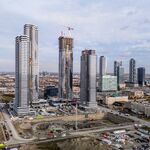TheTigerMaster
Superstar
TTC reported that in 2010 that the entire budget for the 7-km long St. Clair line was about $100 million, of which $30 million were for the Toronto Hydro upgrades.
Meanwhile the 11-km long Finch West is about $1.2 billion in 2010 dollars.
How is that of similar scale and complexity.
They aren't even close to the same scale and complexity! A completely different magnitude!
That is a fair point.
I wonder what portion of FWLRT’s capital costs are due to the LRV order and MSF. Just trying to figure out why such a large difference in cost between the two. You’d think both would have somewhat similar capital costs; they’re both based off of identical technologies after all.




